
Passenger Stations serving Southampton Docks[Source: Dave Marden]
SOUTHAMPTON OCEAN TERMINAL
.jpg) The terminal building at 46 berth with nearby bomb damage, and the old sheds at 43/4 before the Ocean Terminal was built in 1950.
Photo from Dave Marden collection terminal1.jpg) A brochure issued at the opening of the 'new' Ocean Terminal on 1 July 1950.
A brochure issued at the opening of the 'new' Ocean Terminal on 1 July 1950.The dock was first used in June 1911 and perhaps the most famous of the terminals was at berths 43/4, originally two separate sheds, and the departure point for the ill fated Titanic in 1912.
After WWII the prestigious ocean liner trade demanded a new 'state of the art' departure point and port operators (by then) British Transport Commission, set about building the Ocean Terminal which was opened on 31st. July 1950. 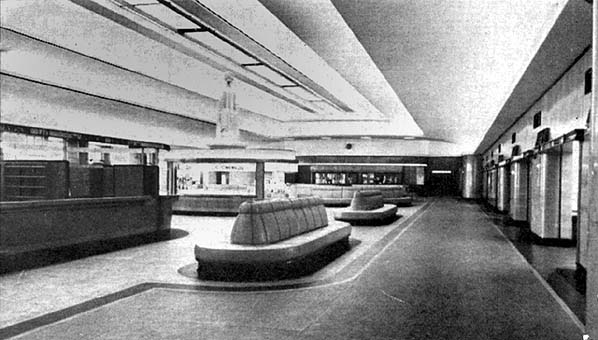 The cabin class waiting hall.
Lifts and escalators assisted passenger movement, and transfer to the ship was by telescopic gangways, there was also a visitor’s balcony to wave people off.
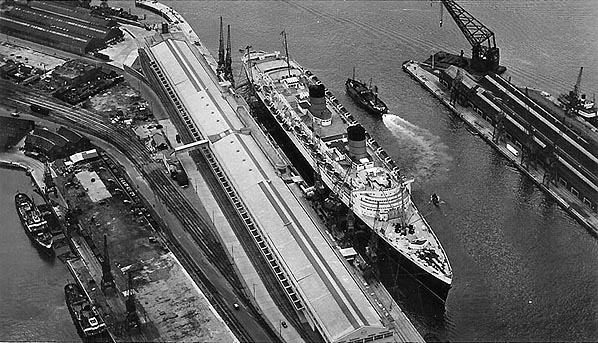 The Ocean Terminal in the early 1960s. The terminal opened in 1950 and you can see the concrete is still gleaming white - as is the new Ocean Road along the left of it. War damaged berths 20/21 in the Empress Dock at bottom left. With the recent resurgence of the cruise trade, a new ocean terminal (opened in 2009) has been constructed on the opposite side of the dock at berths 46/7 but sadly, this has no rail connection. terminal.jpg) Boat train approaching the Ocean Terminal c.1970s.
Photo by Bob Cable NEW (WESTERN) DOCKS EXTENSION TERMINALS
101/2 was in place, the others being 103/4, 105/6 and 107/8 completed by 1934. To reach these berths, trains entered the docks at the Millbrook end, to the west of Southampton Central Station. As was expected from the Southern all facilities were very much rail orientated with passenger platforms both inside and outside the terminals which served a variety of shipping lines.
docks1.jpg) The eastern end of the New (Western) Docks in the early 1930s shows 101 berth shed in the distance. On the left is the contractors yard and the concrete mixing plant used in the dock construction. On the right is reclaimed land that was once the West Bay. The train heading for the Old (Eastern) Docks is a works personnel special headed by class T9 No.120 and is seen passing the Mayflower memorial near the Royal Pier.
Copyright photo from John Alsop collection 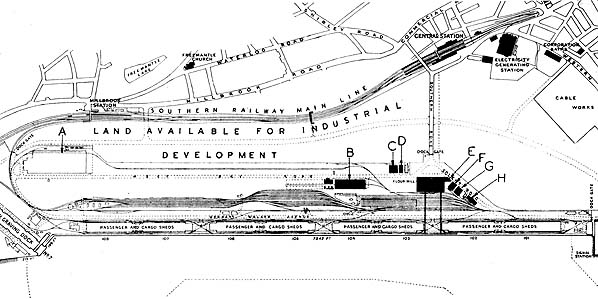 Plan of the New (Western) Docks as completed around 1935 showing the four sets of terminals.
101/2 was severely damaged in a WWII air raid and rebuilt and reopened in January 1956, becoming the arrival berth for the Union Castle Line services which also used berths 103/4 for departing vessels. Berths 105/6 became the base for P&O lines vessels while 107/8 often played host to those of the United States Lines. docks1.jpg) Western Docks in the 1950s.
but with a recent (2010) revival of boat train operations, a temporary platform has been provided at the rear of the sheds.
docks5.jpg) terminal1.jpg) Boat train at the temporary platform at the rear of the Mayflower terminal in December 2010.
Photo by Simon Pielow from his Flickr photostream. WORKMAN'S STATION Lastly, there was a little known station, just inside the dock gates at Canute Road, near to the original Dock House. It was a small curved bare and open platform which appeared around the turn of the 20th century. Its purpose was to collect the various railway workmen for transportation by works train around the Eastern Docks. It is shown on maps and in photographs but seems to have fallen out of use by the time of the Southern Railway and was gone by the 1930s. 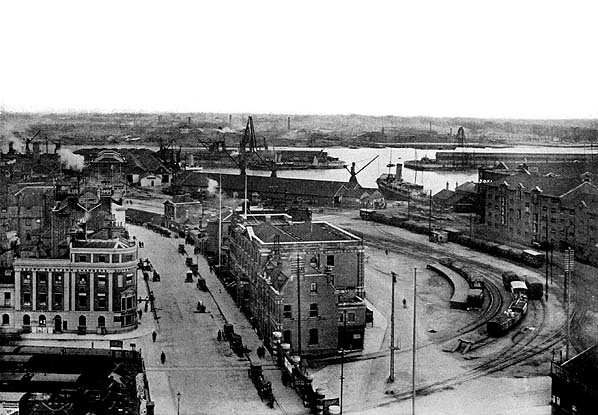 The platform is seen on the right.
Photo from Dave Marden collection 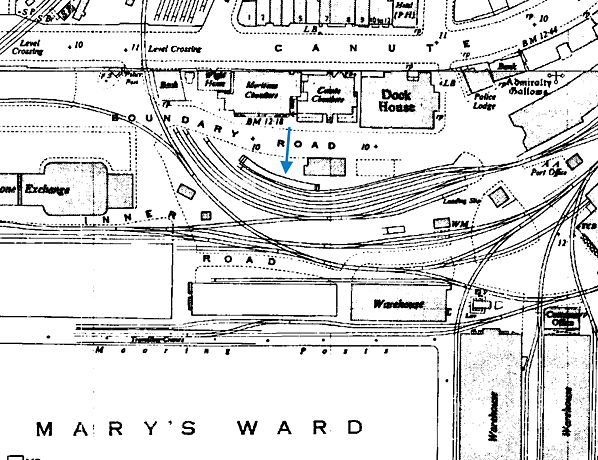 Although no longer in use, the platform is clearly shown on this 1953 1:2,500 OS map.
Click here for more pictures of Southampton Docks Southampton Docks map drawn by Alan Young, Tickets from Michael Stewart
|
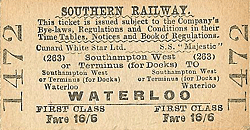
terminal2.jpg)
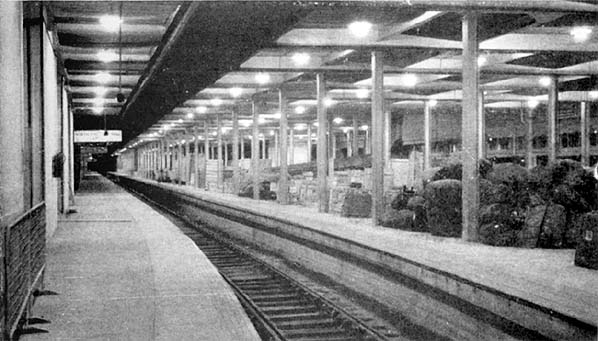
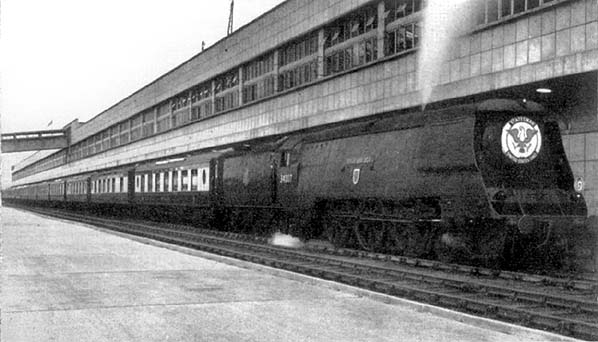
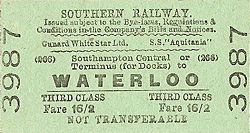
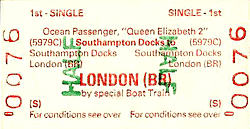
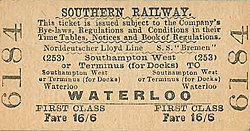
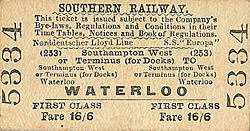

 Home Page
Home Page